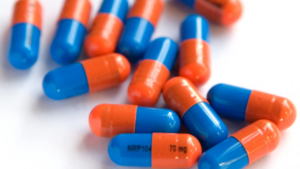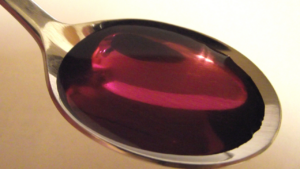Some of you might be familiar with the very stereotypical image of a person who drinks heavily. You might take a moment to imagine the image of the type of character that an older Disney® fairy tale film might include in a tavern scene.
That description might conjure up images of a likely bigger man who is holding a large mug of foamy beer and seems pretty jovial while he drinks. He laughs a lot and loudly, and he’s also got ruddy cheeks, some red spots on his nose and surrounding skin, and something of a lumpy and bulbous nose.
The condition sometimes called “alcoholic nose” or “drinker’s nose” is known medically as rhinophyma.
What is rhinophyma? It’s a particular skin condition and type of severe symptom of rosacea. It is most visible and identifiable through a red-colored, enlarged, or lumpy nose. In some very severe cases, the nose can take on a purple-like hue and suffer from severe disfigurement as it grows more bulbous.
Of course, because rhinophyma is so visible, those who suffer from this skin condition might feel self-conscious. If you have rhinophyma, maybe you feel more hesitant about going out in public. During the workday, maybe you dread having to have your camera on for Zoom meetings.
In the past (and even into the modern-day) rhinophyma was largely considered a symptom of alcoholism. People who struggle with the redness and apparent swelling of their nose’s size can suffer from incorrect and damaging assumptions about their lives and character.
Within the past few years, more evidence and studies have actually proven otherwise. Now, rhinophyma is understood and treated as a condition separate from any connections to alcohol or alcohol use disorder.
Does Alcoholism Cause Rhinophyma?
In the past, and perhaps even now, many people often associated heavy drinkers with having a red and bulbous nose. As the association continued, it became known as “alcohol nose” or “drinker’s nose.”
Redness, of course, is closely associated with alcohol use. This seems like a logical association because alcohol can cause flushed cheeks in some people. Let’s take a look at why some individuals experience a red face when consuming alcohol.
According to Cleveland Clinic, when drinking, facial flush can happen due to two reasons: an enzyme deficiency or rosacea. Both of these are related to your ethnicity.
- Enzyme deficiency: Cleveland Clinic dermatologist, Alok Vij, explains that “many Asian populations have a deficiency in alcohol dehydrogenase, the enzyme that breaks alcohol down.” As alcohol enters blood vessels’ cells, the cells dilate, making your face flushed or red. This can also make you feel warm. If you have lesser quantities of this particular enzyme, it will be easier for your face to get flushed upon drinking alcohol. Because many Asians are affected by this, the condition is sometimes casually referred to as “Asian flush.”
- Rosacea: Cleveland Clinic identifies fair-skinned people with Northern European ethnic backgrounds as persons who may be susceptible to some degree of flush while drinking due to rosacea. Rosacea can be easily triggered due to particular foods and diets. For example, things like chocolate, alcohol, hot drinks, and spicy foods can cause a person’s rosacea to flare up.
So, although some people experience some degree of flush or redness, it does not necessarily mean that all those people struggle with rhinophyma. Poor assumptions based on fleeting characteristics such as a drinking flush can lead to misinformation about the true causes of a condition.
You should be very cautious in assuming that anyone with an enlarged nose or redder nose has an alcohol use disorder. However, there is some very slight truth to the idea that alcohol may contribute to the development of rhinophyma or aggravate the symptoms of the skin condition.
Because alcohol consumption can aggravate the skin of individuals who suffer from rosacea, this in turn may contribute to the symptoms of rhinophyma.
Does Alcohol Consumption Affect Rosacea?
Since we’ve already briefly mentioned rosacea as a cause for flushed cheeks while drinking, you may wonder, what exactly is rosacea?
Before we look at how alcohol consumption affects a person’s rosacea, we first need to understand what rosacea is, where it comes from, and how it can affect a person.
Rosacea is a fairly common skin condition that often looks like splotches of red across the cheeks and other portions of the face. Mayo Clinic explains that this skin condition may also make blood vessels visible in the face. Small pores and bumps may also appear, sometimes filled with pus.
To many people, rosacea may look like an acne outbreak, natural coloring on the cheeks, or general hyperpigmentation. The condition tends to affect light-skinned middle-aged women more often, but anybody of any age and skin tone can have rosacea. Currently, there is no cure for rosacea, but there are some options available to manage and reduce the symptoms.
Symptoms of Rosacea:
- Facial redness: As the blood vessels in the face become visible, the distinct red coloring also brings a red cast to the cheeks and face. In general, the redness is limited to the center areas of the face.
- Swollen, red bumps (can be pus-filled): These pimple-like bumps look very similar to acne. This is why it is very easy to mistake rosacea bumps for acne. Like acne, the bumps may become filled with pus. The bumps and the skin surrounding them can also feel tender, hot, or uncomfortable.
- Eye problems: Swelling is a common symptom in those with rosacea. Dry, irritated, and swollen eyelids are a common irritant to many people with the condition. Rosacea that particularly affects the area and skin surrounding the eyes is known as ocular rosacea. Mayo Clinic explains that for some individuals, the symptoms of ocular rosacea may occur before other skin symptoms.
- Swollen nose, disfigured shape of nose: Over time, rosacea can make the nose more bulbous by thickening the skin of the nose. This thickening of the skin leads to what we call rhinophyma, the very topic of this blog. Although rhinophyma can happen to anyone, it tends to develop more in men than women.
Now the question remains: does alcohol affect rosacea? Yes, alcohol can trigger rosacea flare-ups! As we briefly mentioned earlier, a number of food and drink items, and even environmental factors, can contribute to a flare-up of a rosacea bout.
Potential Rosacea Flare-Up Triggers:
- Hot drinks
- Spicy food
- Alcohol
- Stress (and other emotions)
- Sunlight
- Wind
- Extreme temperatures (both warm and cold)
- Drugs that dilate blood vessels
- Some cosmetic or skincare products
- Physical activity
If you have rosacea and are sensitive to alcohol, you may consider other alternatives such as non-alcoholic beer.
While alcohol consumption can contribute to rosacea flare-ups, it does not necessarily mean every person with rosacea will automatically develop rhinophyma. Rhinophyma is an extreme side effect of rosacea and won’t happen to everyone. Just like every medical diagnosis has a variety of side effects, not everyone with a medical condition will experience the same side effects. However, those who already have rhinophyma may find the condition aggravated or made worse by some alcohol consumption.
In general, it is mostly incorrect to say rhinophyma is caused by alcoholism or alcohol dependency. There are people who develop rhinophyma who do NOT drink—or drink very minimal amounts. In some cases, the association of rhinophyma with alcoholism can make people embarrassed to seek treatment for their skin condition for fear of being labeled as an alcoholic.
The National Institutes of Health summarize this notion on the official rhinophyma page saying:
“Historically, rhinophyma was erroneously considered to be linked with alcohol consumption because substances such as alcohol and caffeine can cause local vasodilation, which worsens the symptoms. This alleged association with alcohol has caused much social stigma and loss of self-esteem in patients suffering from the disease, with several nicknames for the condition such as “whiskey nose” and “rum nose.”
Can Rhinophyma Be Treated?
There are a couple of options to treat rhinophyma. Two of the most widely used treatments include medication and surgery.
Medication: Some medication options can help control a person’s rhinophyma. In general though, once rhinophyma is manifested, it can be difficult to fully manage with medication alone. Milder cases and cases that are identified as a side effect of rosacea can be managed through prescription medication to some degree of success.
Healthline lists a variety of medications that are targeted to reduce inflammation and prevent the skin’s oil gland from producing as much oil. These medications include:
- Topical and oral antibiotics to reduce inflammation and redness including metronidazole, sulfacetamide, tetracycline, erythromycin (Erythrocin® Stearate), and minocycline (Minocin®)
- Topical medications that help to limit inflammation, such as tretinoin (Retin-A®) and azelaic acid (Azelex®)
- Oral medication that prevents skin glands from producing oil, such as oral isotretinoin
Surgery: For cases when rhinophyma has already been fully manifested, surgery is probably the most effective option for treatment. Because rhinophyma can cause disfigurement of the nose and excess tissue growth, the airways in the nose may become obstructed. This can make breathing difficult and uncomfortable.
The longer disfigurement and tissue overgrowth is present on the skin, the more likely the disfigurement can become permanent. If you’re seeking treatment for rhinophyma, it is better to seek treatment sooner rather than later.
Talk to your doctor or find a dermatologist if you need treatment.
The Bluffs offers comprehensive and personalized treatment for alcohol addiction. Our programs are tailored for lifelong success and recovery. Contact us at 850.374.5331.







